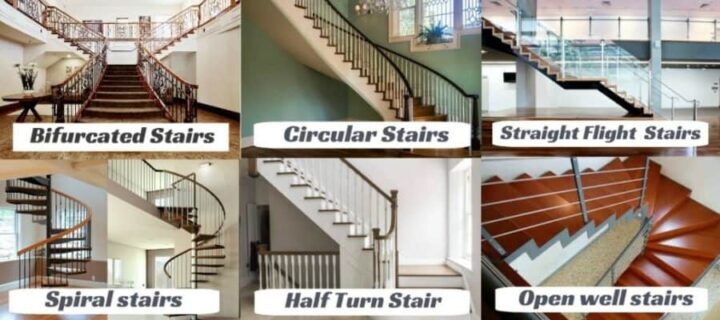
TYPES OF STAIRS IN CIVIL ENGINEERING
Let us look into the different types of stairs in this article.
Definition: Stairs are a series of steps properly arranged to connect different floors of a building.
A continuous series of steps, form a flight and there may be two or more flights between platforms called landings.
The horizontal upper portion of a step called a tread and vertical or front portion of a step called a Riser. These are supported by inclined boards called different types of stairs,.
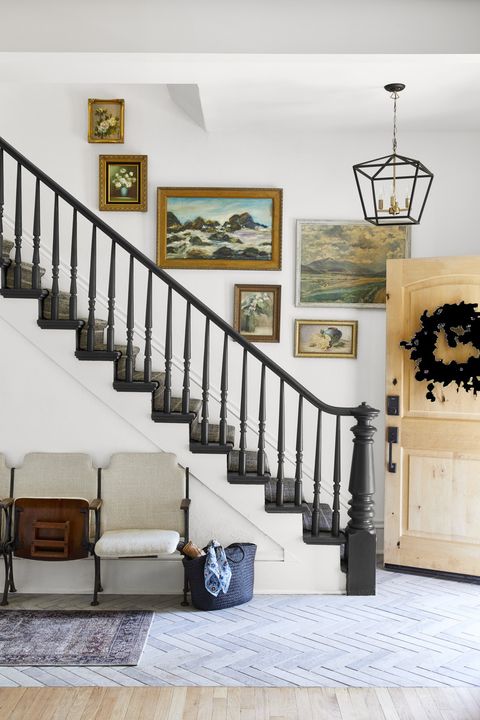
Proper sizes of treads, risers, newel posts, hand rails and balusters are designed for stairs to provide comfort and safety to the persons using them for easy and quick access to the various floors. Flights of stairs and landings encased on either side by balustrade are called a staircase. The opening or space occupied by the stair is known as a stairway.
The means of communication between the various floors can be also provided by lifts, ramps, ladders and escalators.
The materials used in the construction of stairs are stone, steel, wood, R.C and cast iron.
Fire protection of staircase is extremely important particularly in multi-storeyed buildings. Staircases not only provide access and communication, but also they are a path for spreading of fire from one floor to another. Also people of higher floors rush down the stairs during a fire hazard. Lifts are easily paralyzed then. Staircase therefore must be enclosed by fire resistant walls, floors, ceilings and doors. It is desirable that the linings to the walls and ceiling are non-combustible.
Types of Stairs in Civil Engineering
Classification of Stair from construction point of view as under,
- Straight flight stairs
- Quarter turn stairs
- Half turn stairs
- Three quarter turn stairs
- Circular stairs
- Spiral stairs
- Bifurcated stairs
i) Straight flight stairs:
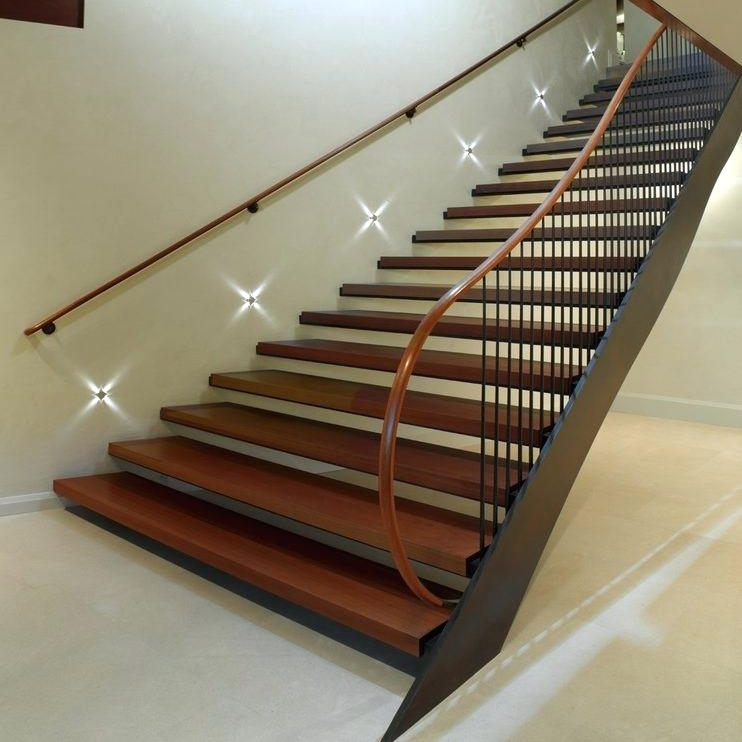
These are continuous stairs along which there is no change in direction on any flight between two successive floors. The stair may consist of either one single flight or more than one flight (usually two) with a landing. These are used for houses where there are restrictions in available width for its location, but enough length is available. As there is no change in direction, risers facing the ascending person cause uneasiness and monotony.
Straight flight stair with a landing may further increase the length of stairs and had very little advantage.
ii) Quarter turn stairs:
When the direction of the flight is changed at right angles either to the left or to the right, quarter turn stairs are used. The change in direction can be effected by either introducing a quarter space landing or providing winders at the junction of two flights. Half turn stairs: Half turn stair is the one which has its direction reversed or turned through 180° by introducing a half space landing or winders. This type of stairs is commonly used in residential buildings and public buildings. These may be of two types:
a) Dog-legged stairs
b) Open well stairs or open newel half turn stairs.
(a) Dog-legged stairs:
This name is given because of its appearance in sectional elevation. A dog-legged stairs is called from its being bent or crooked suddenly round in fancied resemblance to dog’s hind leg.

It consists of two flights of steps which run in opposite direction. No space is provided between the flights in plan. Usually a half space landing placed across the two flights at change of direction. This type to accommodate two widths of flights of stair is useful where width of the stair hall is just sufficient.
(b) Open well stairs or open newel half turn stairs:
Open well stairs is very similar to a doglegged stair. There is a well opening between the flights and it may be used to accommodate a lift. The width of stair would therefore be twice the width of the stair plus the width of the well hole or opening (1500 mm to 10,000 mm). It requires more space than a dog-legged stair.
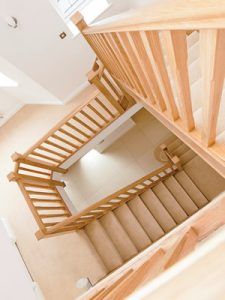
At head and foot of each flight of the stair, newel posts are placed which form a conspicuous architectural feature for the stair to be called newel stair.
iv) Three quarter turn stairs:
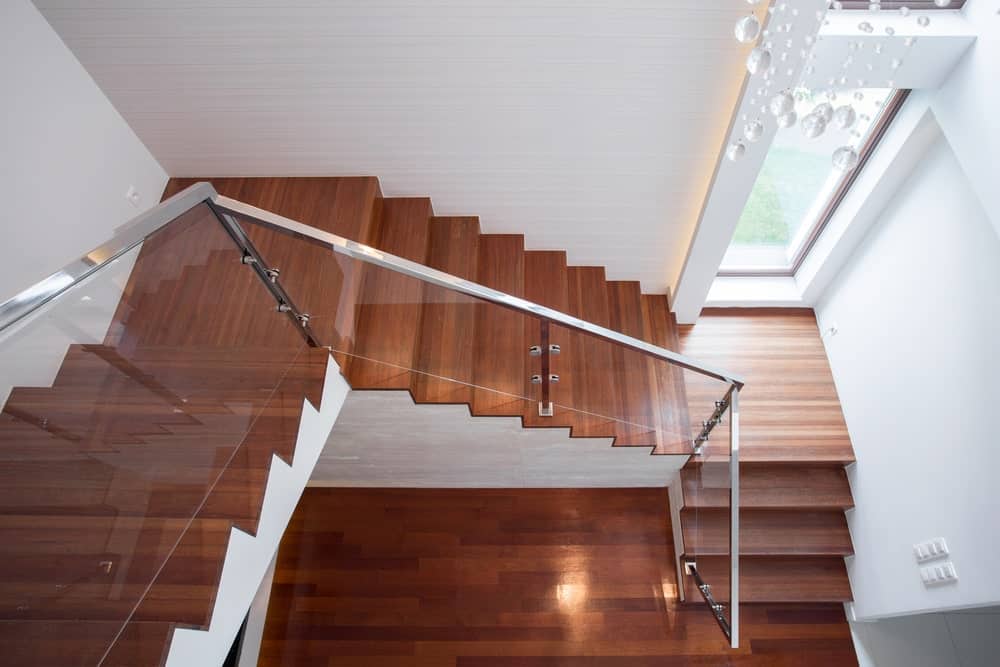
These type of stairs change their directions three times i.e., through 270° with its upper flight crossing the bottom one, In general, in this type of construction, a bigger open well is formed.
v) Circular stairs:
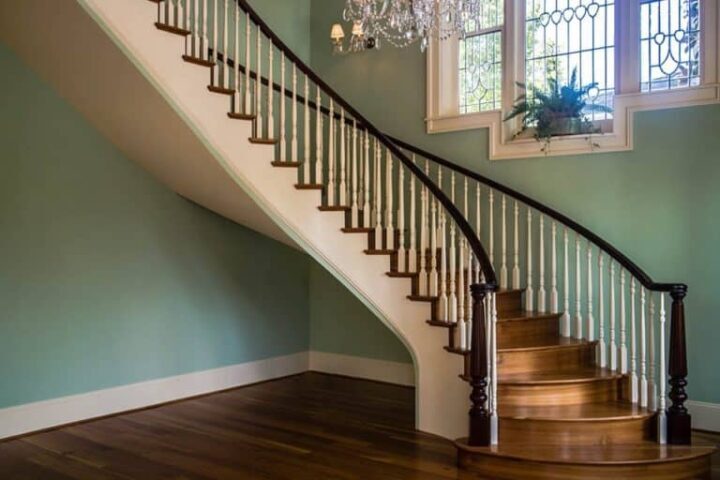
In this type of stairs, all the steps radiate from a central point of a semi-circle (in plan) in the form of winders. Circular stair is commonly provided at the entrance of a building for better architectural appearance. These are commonly constructed in R.C.C. and brick.
vi) Spiral stairs:
These stairs consist of same sized winders provided at a constant deflecting angle to offer continuous change in direction along within elevation. They radiate around a central newel post and occupy the least space. Overall diameter of such stairs (winders) may range from 1 m to 2.5 m. The stairs are not comfortable as they are full of winders and continuously change the direction.
When the available space is too small and number of users is limited, this type of stair is constructed with cast iron or R.C.C.
To know more about Spiral Stairs click here
vii) Bifurcated stairs:
This type of stair is very common in modern aristocratic symmetric public buildings at their entrance in which it appears as a prominent feature. The stair has a wide flight at the bottom, which bifurcates into two narrower flights, one turning to the left and other to the right at the landing.

It is a combination of two quarter turn stairs symmetrically arranged.
The most common type of stair which is provided in residential houses is the dog-legged type. Open well type and bifurcated type stairs are provided n public buildings. Geometrical type stair is provided to give better appearance, straight flight type stairs are most commonly used in residential buildings.
Three quarter turn stars are adopted in special cases as in posh hotels with a very wide stair case room incorporating reception in between. It may also be provided in palaces of more headroom to create a spacious and majestic look. Spiral stairs are provided when space is not available for common types of stairs. It is provided at the back of the buildings for sweepers or servants for cleaning bathroom, w. c. etc.
These are the most famous types of stairs. For any more doubts , do let us know in the comment section.
Read More :
Step by Step Process of Building Construction
Best CEMENT for Construction in INDIA